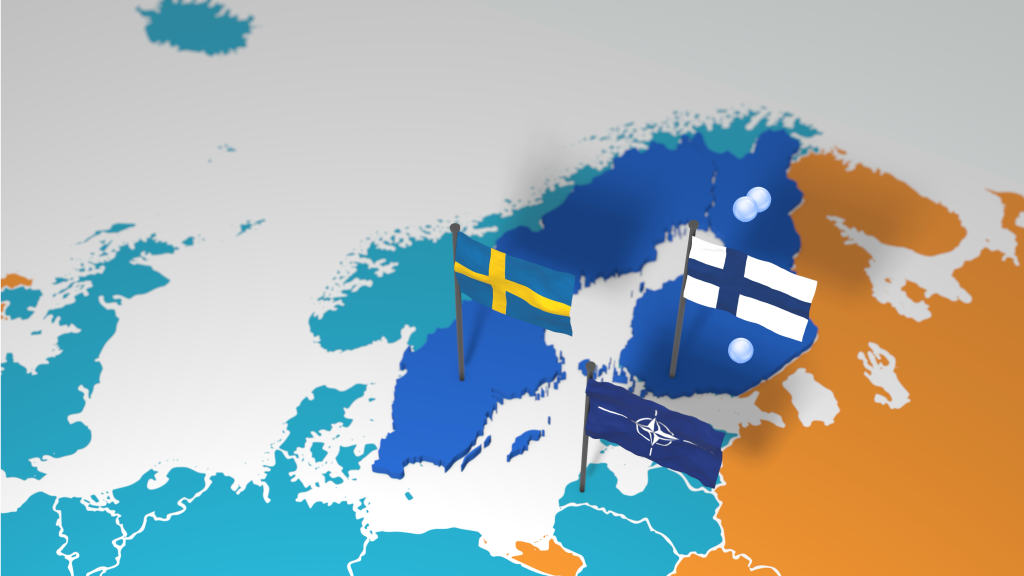The Northern European Army headquarters will be based in Mikkeli, reflecting its historical significance as Finland’s military command hub during both the Winter and Continuation Wars. In Lapland, Swedish-led NATO’s headquarters is planned for either Rovaniemi or Sodankylä, focusing on the Forward Land Forces (FLF) to enhance Northern Finland’s defence.
Mikkeli was chosen for its strategic location and existing military structures. The local NATO headquarters will initially host a few dozen foreign officers alongside Finnish personnel, with potential for future expansion. These efforts will integrate with NATO’s Joint Operations Command in Norfolk, USA. The FLF will regularly train in Finland and, during crises, defend NATO’s eastern border. Sweden will lead the NATO forces in Finland. However, Finland will still command its own defence forces.
A Historical Struggle for Finland

Finland’s territory has been contested for nearly a millennium. In the medieval period, Finland was the focus of conflicts between Western powers, such as Sweden, and Eastern forces like Novgorod. Notably, the Swedish conquest began with the First Crusade in the 1150s. Under Swedish rule, Kajaani Castle, located in the mid-northern region, played a pivotal defensive role against Russia. Destroyed by Russian forces during the Great Wrath (1713–1721), the castle’s destruction symbolized the harshness of Russia’s occupation, marked by brutal raids and widespread destruction.
Defending Lapland with and against the Germans
In World War II, Finland first fought alone in the Winter War (1939–1940) against the Soviet Union. Finland lost 10 percent of its most fertile agricultural land and the city of Vyborg to the Soviet Union but maintained its independence. The war ended because Stalin feared Finland might ally with France and the United Kingdom, which had already sent modest aid.

Finland soon allied with Nazi Germany, which had also turned against the Soviet Union. There were no real options for allies available for Finland, then. Between 200,000 and 250,000 German troops were stationed in Finnish Lapland, fighting the Soviets during the Continuation War (1941–1944). After Finland signed a peace treaty with the Soviet Union, it was forced to expel these German forces in what became the Lapland War (1944–1945). The German retreat involved heavy fighting, and in response to Soviet pressure, Finland engaged militarily with the German troops, resulting in the near-total destruction of Rovaniemi and other regions of Lapland, largely due to the Germans’ scorched earth policy.
The Lapland War began after the Moscow Armistice in 1944 when Finland agreed to drive German forces out of the country. The Soviet Union demanded active military operations against the Germans, leading to a series of battles as German troops withdrew toward Norway. By spring 1945, Finland had succeeded in expelling the Germans, but at a significant cost, with large parts of Lapland left in ruins.
As Finland advances as a NATO member, it once again has Western allies defending its eastern border. The security of the North will now be bolstered not only by Sweden, Norway, and the U.S. but also by other NATO countries, including Germany.
Read More:
- YLE: Tänne tulevat Suomen Nato-tukikohdat (in Finnish)
- SVT: Sverige föreslås leda Nato-högkvarter i Finland (in Swedish)
- YLE Svenska: Antti Häkkänen i Morgonettan: Finland leder sitt eget försvar (in Swedish)
- Aftonbladet: Sverige föreslås leda Nato-styrka i Finland (in Swedish)
- The Barents Observer: Sweden will lead NATO troops in northern Finland
- YLE News: Finland’s NATO HQs will be based in Mikkeli and Finnish Lapland, Yle sources
- Force News: Nato to get a boost as new member Finland unveils location of alliance bases
- Wikipedia: Lapland War
- Wikipedia: Great Wrath



